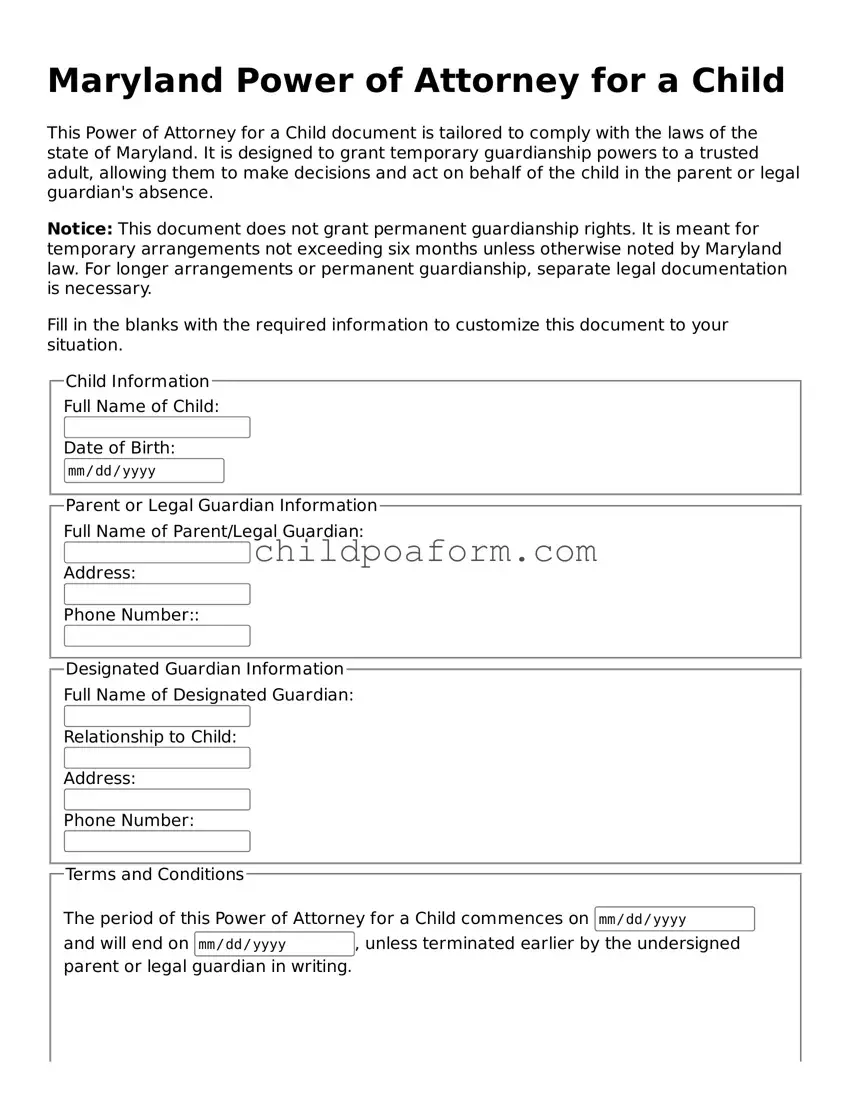Instructions on Utilizing Maryland Power of Attorney for a Child
Power of Attorney (POA) for a child is a document that allows a parent or guardian to grant another individual the authority to make decisions on behalf of the child, typically in the parent or guardian's absence. Expected circumstances could range from being away due to work commitments to longer-term situations where a guardian might not be able to care for the child. In Maryland, filling out a POA for a child form involves providing detailed information to ensure that the designated individual can legally act for the child in various matters, from medical to educational decisions. Following a structured approach can streamline this process, making it easier and more efficient.
Steps needed to fill out the Maryland Power of Attorney for a Child form:
- Begin by downloading the official Maryland Power of Attorney for a Child form. Ensure you have the most current version by checking the Maryland judiciary's website or consulting a legal professional.
- Complete the top section of the form, which typically includes the child's full name, date of birth, and current living address. This step establishes the child as the primary focus of the document.
- Identify yourself as the parent or legal guardian. This part requires your full name, your relationship to the child, and your contact information. If there are co-guardians or another parent involved, their information must be included as well.
- Designate the individual (or individuals) who will have Power of Attorney. Fill in their full names, addresses, and how they relate to the child. This step is crucial because it legally grants them the capacity to act on behalf of the child.
- Specify the powers being granted. Maryland's POA form might include a list of decisions the agent can make, such as medical care, schooling, and travel. If the form has checkboxes next to these powers, check all that apply. For powers not listed, describe them in the provided space.
- Determine the duration of the Power of Attorney. Maryland law might require a specific end date for the POA to be valid. If so, indicate the date or event that will terminate the POA on the designated line.
- Review the completed form for accuracy. It's paramount to ensure that all information provided is correct and that no sections have been inadvertently skipped.
- Sign and date the form in the presence of a notary public. Maryland law typically requires POA documents to be notarized to be legally binding. The agent(s) being granted power may also need to sign, depending on state requirements.
- Provide copies of the notarized form to relevant parties. These might include the agent granted POA, the child's healthcare providers, and their school. Retain the original document in a safe but accessible place.
After completing these steps, the Power of Attorney for a Child will be in effect, according to the terms specified in the document. It's a responsible action that helps ensure the child's needs are met, even when the primary guardian is not available. For further assurance, consulting with a legal professional can help navigate any complex situations or answer questions specific to Maryland law.
